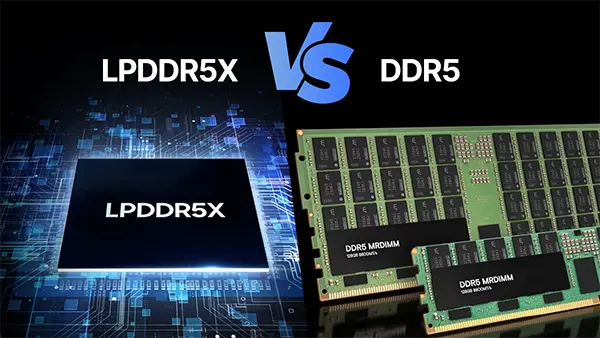
NVIDIA DLSS 3.0: The Future of High FPS Gaming
NVIDIA DLSS 3.0 is the latest breakthrough in gaming technology, promising unparalleled improvements in performance and image quality. With this innovative solution, gamers can experience higher frame rates and enhanced visuals, setting a new standard for gaming excellence. Let’s dive into the details of how this technology works, its benefits, and what the future holds for gamers.
Introduction to NVIDIA DLSS 3.0
NVIDIA’s latest innovation, Deep Learning Super Sampling (DLSS) 3.0, has revolutionised the gaming industry. Built upon the advancements of DLSS 2.0, this technology leverages artificial intelligence (AI) to provide exceptional performance gains while maintaining high-quality graphics. It employs cutting-edge algorithms to upscale lower-resolution images into high-definition frames, ensuring crisp visuals while reducing the computational burden on hardware. This is a game-changer for gamers looking to push the limits of visual fidelity without investing in high-end GPUs.
Moreover, DLSS 3.0 introduces a new feature called Frame Generation. This technique predicts and generates intermediate frames between rendered ones, further enhancing smoothness and fluidity in gameplay. By doing so, it allows for seamless performance even in graphically intensive titles, making it ideal for high-action or open-world games. With DLSS 3.0, NVIDIA continues to set new benchmarks for gaming technology.
How DLSS 3.0 Works
DLSS 3.0 operates on the foundation of deep learning and neural networks. NVIDIA’s AI-based solution uses a pre-trained model that processes lower-resolution images, analysing motion vectors and scene data to reconstruct them into high-resolution outputs. The inclusion of Tensor Cores in RTX GPUs makes this process highly efficient, allowing for real-time AI computation without noticeable input lag.
In addition to upscaling, Frame Generation ensures that rendered images flow smoothly by synthesising new frames using AI. This reduces the workload on the GPU, freeing up resources for other demanding processes such as ray tracing. For example, during gameplay in titles like “Cyberpunk 2077,” players can achieve a near 2x increase in FPS compared to native resolution rendering. This is especially beneficial for gamers using 4K or even 8K monitors, where traditional rendering methods often struggle to maintain smooth frame rates.
Benefits of DLSS 3.0 for Gamers
One of the most remarkable benefits of DLSS 3.0 is its ability to enhance gaming performance across various hardware configurations. Whether you own a high-end RTX 40-series GPU or a more modest RTX 20-series card, the technology optimises resource utilisation to deliver exceptional results. For instance, in demanding games like “Control,” enabling DLSS 3.0 can lead to frame rate improvements of up to 100%, making gameplay far more immersive.
Another critical advantage lies in the preservation of visual quality. Unlike traditional upscaling methods, DLSS 3.0 ensures that textures, shadows, and particle effects remain detailed and realistic. Gamers no longer need to compromise between performance and graphical fidelity. Additionally, the technology extends the relevance of older GPUs, ensuring that players who have not yet upgraded to the latest hardware can still enjoy new releases with improved performance.
For developers, DLSS 3.0 provides a scalable solution that reduces the complexity of optimisation for different hardware configurations. By incorporating this feature, game studios can focus on creating content while leaving performance enhancements to NVIDIA’s AI-driven technology.
Enhanced Gaming Experiences
Beyond performance metrics, DLSS 3.0 transforms the overall gaming experience. With ray tracing becoming more prevalent, the ability to render lifelike lighting, shadows, and reflections is now more accessible than ever. DLSS 3.0 enables players to activate these features without worrying about severe drops in performance. For example, games like “Portal RTX” showcase how DLSS 3.0 enhances every visual element, from subtle reflections to complex shadow interactions.
Competitive gamers also stand to gain significantly. In fast-paced games like “Call of Duty: Warzone,” maintaining high FPS is critical for precision and reaction times. DLSS 3.0 ensures smoother animations and reduced latency, giving players an edge in competitive scenarios. This balance of performance and visual excellence redefines what players can expect from modern gaming hardware.

Future of Gaming with DLSS 3.0
The introduction of DLSS 3.0 signals a shift in the gaming landscape towards AI-powered rendering. As game developers continue to adopt this technology, we can expect a growing number of titles to benefit from its capabilities. Current examples include “Hogwarts Legacy” and “The Witcher 3: Wild Hunt,” which use DLSS 3.0 to bring stunning visuals to life while maintaining stable frame rates. The widespread adoption of this technology will undoubtedly set new standards for visual fidelity in gaming.
Looking ahead, NVIDIA’s roadmap suggests that DLSS will evolve to incorporate even more advanced AI techniques. These may include adaptive rendering based on gameplay scenarios or even real-time adjustments to balance performance and quality dynamically. Such innovations have the potential to make high-quality gaming experiences accessible to a broader audience, regardless of hardware constraints.
Broadening Compatibility
NVIDIA has taken significant steps to ensure DLSS 3.0 is accessible to as many gamers as possible. By collaborating with industry-leading game engines such as Unreal Engine 5 and Unity, the company has made it easier for developers to integrate DLSS support. Additionally, upcoming driver updates aim to expand compatibility with older RTX GPUs, further broadening the reach of this groundbreaking technology.
As NVIDIA continues to refine and enhance DLSS, its role in shaping the future of gaming cannot be overstated. By empowering developers and delighting gamers, DLSS 3.0 exemplifies how AI can elevate gaming experiences to unprecedented levels. Whether you’re a casual player or a competitive enthusiast, DLSS 3.0 offers a glimpse into the exciting possibilities that lie ahead for the gaming industry.




